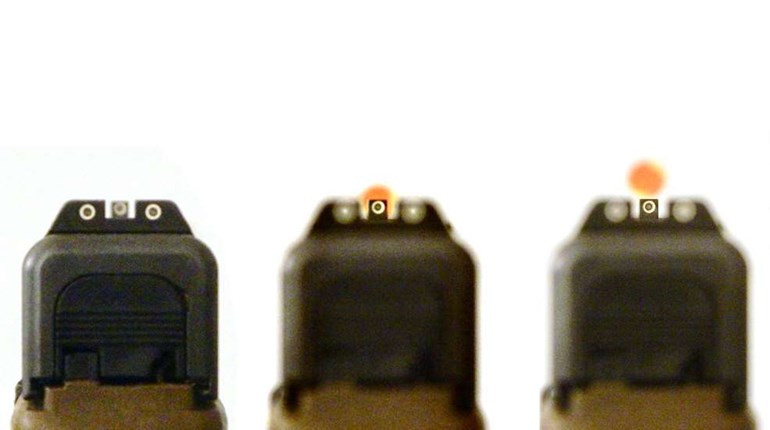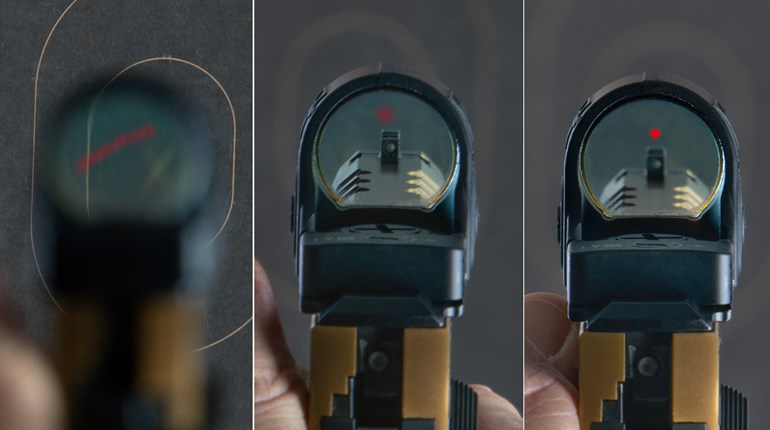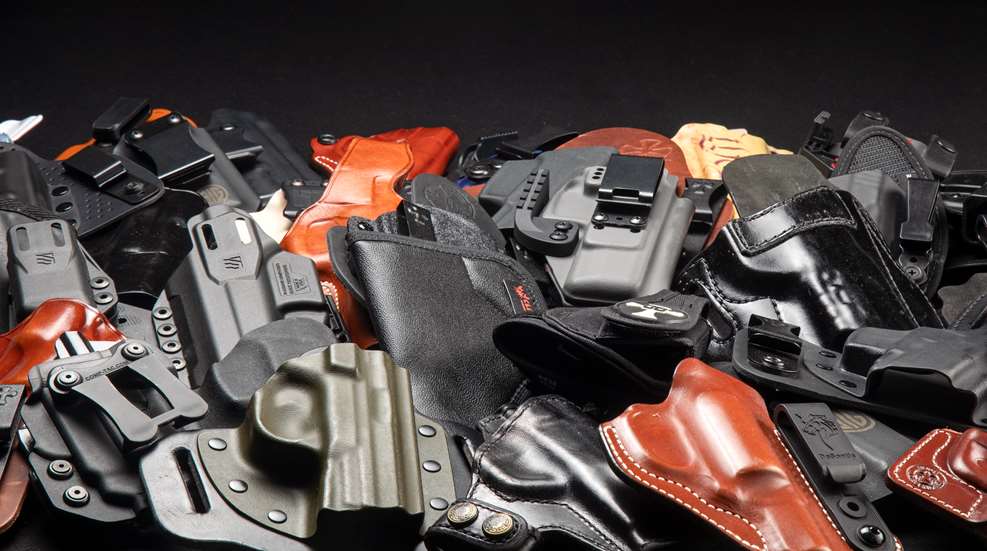
We all have that one drawer or box filled with holsters we never use. To minimize that ever-growing collection, here are five useful time-, cost- and space-saving considerations when buying yet another holster.
Appropriate holster selection starts with identifying your intended purpose for both short-and long-term use. The question “What’s the best holster for me?” is really no different than asking the question “What’s the best gun for me?”
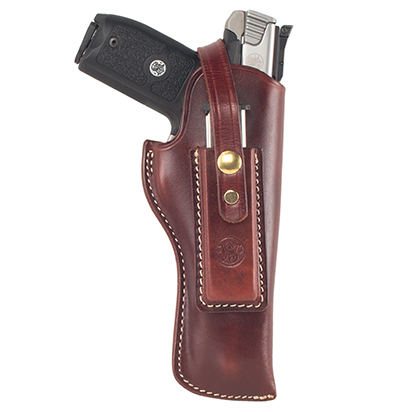
Form Fits Function
Selecting “the best gun” begins with the answer to “What do you intend to use the gun for?” Will it be for plinking or target practice? Will you use it for competitive shooting? Is it intended for use as a personal-defense firearm?
Do you plan on carrying it concealed? If you plan to carry a concealed firearm for personal defense, a .50 BMG—although chambered an effective caliber—may be quite difficult to carry, concealed or otherwise. Conversely, if you plan to reach out to a target 1,760 or so yards away, a short-barrel derringer may not be your best bet.
Selecting “the best holster” starts with a similar question: “What demands will you place on that holster?” Will it be used for weekend plinking or occasional target practice? Will it be used as a duty holster? Will it be used in competitive shooting? Do you intend to use it for personal defense? Might you be contemplating a combination of those activities?” Once these initial questions are asked and answered, you can then begin your search in earnest with form fitting function.
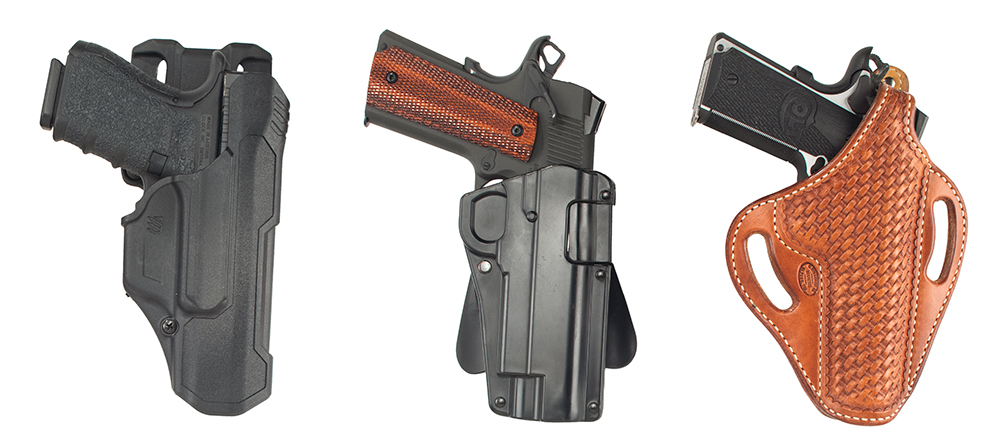
Demand
The purpose of using a holster is threefold: to provide secure retention of a handgun on your person, to prevent unintended trigger manipulation and to allow you a reasonably unencumbered presentation (draw).
Additional demands placed on a viable holster often include durability, comfort, affordability and the quality of construction.
Finding one suitable holster to meet these and other demands specific to your handgun make, model and type (revolver or semi-automatic) can be a dreaded, storage-box daunting task. (You may end up needing two or more for the same gun as the demands of wardrobe change.) However, there are five useful considerations that can lighten that lift. They are: materials, sizing, accessibility, carry and deployment.
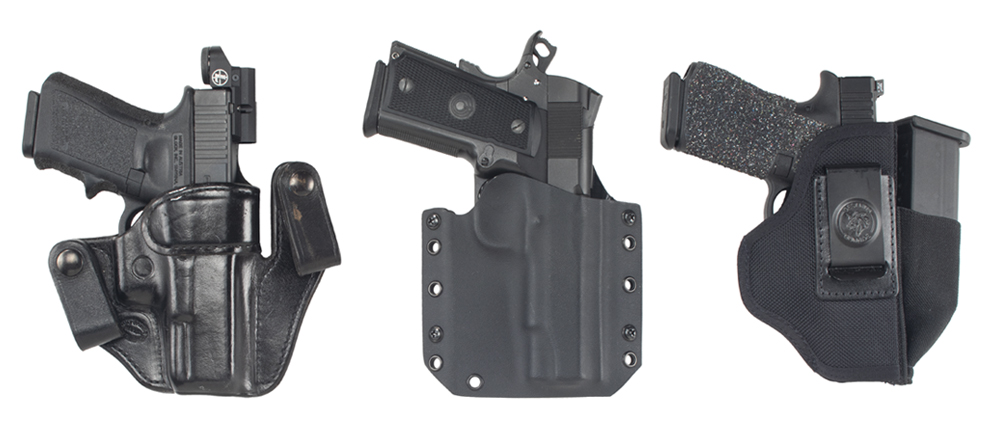
Materials
The modern-day holster can be manufactured from any number of construction materials ranging from traditional to contemporary. Each has its advantages and disadvantages. Material selection should ultimately support whatever performance demands you place upon the holster.
Traditional materials may include the likes of leather, nylon or a combination thereof. Raw leather is relatively inexpensive and conforms to your body shape. The downside is difficulty in re-holstering and eventual loss in firearm-retention capability.
Finished leather is stout and provides sturdy retention plus the benefit of eventually conforming to your body shape with use over time. As with any leather product, if worn in an extremely humid environment (or subjected to a lot of sweating) it tends to get a bit sticky when wet.
Nylon, although moisture-resistant and less expensive, doesn’t provide the same level of retention as finished leather or molded polymers.
Scientifically speaking, polymers are large molecules made by bonding (chemically linking) a series of building blocks to form a malleable and durable material. Some polymers are flexible. Others are very stiff. Just think of the many types of plastics. For example, material in a flexible soda bottle is quite different from that in an industrial plumbing pipe made from polyvinyl chloride (PVC).
Familiar polymers such as Kydex, Boltaron and others are commonly lightweight and moisture-resistant, and although sometimes not as comfortable as leather (which, over time with use, conforms to the contours of your body), do provide long-term, adequate support and retention.
Solid polymer holsters are durable, lightweight, require little or no adjustment and are form-fitted to the contours of a particular handgun. Polymer holsters tend to hold their shape, never rot and rarely, if ever, wear out with use. A good Kydex holster will last indefinitely. However, given extreme climates, plastics and other materials made from polymers tend to soften (and lose shape) as they heat up or become brittle as they freeze.
Holster-construction materials can also be combined to create a functional hybrid such as the combination of polymer and leather.
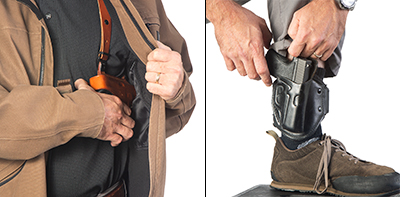
Accessibility
If you are a competitive shooter, you would want your firearm to be quite readily accessible. Other than covering the trigger guard (as required by competition rules), a competitive shooter does not want any additional retention devices and therefore requires an “open” holster necessary for rapid presentation with the muzzle clearing the holster in the least amount of time possible.
The competition holster is usually mounted on a competition belt and commonly dropped or dropped and offset. Competitive-shooting holsters are designed to be worn at competitions, outside the waistband and to provide the shooter with optimal accessibility in a controlled environment.
If you are a defensive shooter and your handgun is intended for self-defense, although you may want the same rapid access afforded the competition shooter, there are additional considerations such as concealability and retention.
In any real-world, violent, physical altercation, you could find yourself in a fight for your life with your gun, which warrants an adequate handgun retention capability on your chosen everyday-carry (EDC) holster.
Accessibility for a defensive shooter can be in one of three locations on your person. Above the waistband such as a shoulder holster, at the waistband (outside or inside) or below the waistband (thigh or ankle holster).
In support of accessibility for either inside or outside the waistband carry, you’ll also need a good, sturdy gun belt, as many holsters rely on a belt to help hold the weight of the firearm and keep it pulled close to the body.

Sizing
Like fingerprints, no two human bodies are the same. When it comes to sizing holsters, one size does not fit all. Holsters are available in multiple mounting configurations and as such must conform to both your body and the make and model of your handgun. The two are not the same and can sometimes be difficult to match.
Sizing to a specific make and model can be either custom or production. High-volume holster manufacturers produce holsters that fit a range of makes and models. Good enough for government work, these general-production holsters usually do a fairly good job of doing what a holster is designed to do.
Conversely, custom holsters are built specifically for your exact make and model. Although probably more expensive, you do get what you pay for when it comes to exact sizing. Although it may exactly fit your make and model, you will need to try it on for size to find if it is an exact fit for your body. Body sizing is the reason why it’s difficult to shop for holsters online. Yes, you can return it if it doesn’t fit your body, but most people don’t and can you guess where that holster that doesn’t quite fit your body ends up? You guessed it—that one drawer or box filled with holsters we never use.
Carry
In the defensive-handgun world there are two general categories of how your handgun is attached to your body. One is open carry, in which the firearm and holster are both visible and in plain sight. The other category is concealed carry, which implies that the firearm and holster are “covered” in such a manner as to not be visible in plain sight. Concealed carry utilizes a cover garment or garments to reduce (or even eliminate) ready detection of a firearm on your person.
If it is not an open carry (plainly visible), then it is considered a “concealed carry,” which means you will not be fastening your defensive carry holster to an external competition belt, but to an internal carry system.
Concealed carry invites an additional set of considerations. Concealed means the need for an appropriate cover garment. Given the three accessibility locations (above, at and below the waistband), that could include anything from a sweater or a jacket to an oversized shirt and/or including long pants to cover an ankle holster.
If carrying inside the waistband (IWB)—which presents a lower profile than outside the waistband—then there are two practical positional carry locations: crossdraw and strong-side draw. If strong-side draw, there are four additional possibilities: IWB appendix carry, IWB 3 o’clock position, IWB 4 o’clock position and the somewhat controversial IWB 6 o’clock (small-of-back) position.
Following the form fits function model, your decision of where and how to carry opens up a few more questions, such as how often will you carry? Are you carrying off duty? Is it range day? Will you be sitting in a car all day?
Will the day include rigorous or extended physical activity requiring greater levels of retention? How much body real estate will the holster eat up? Answers to these questions, plus personal preference, are what will
determine which holster best fits your functional demands.
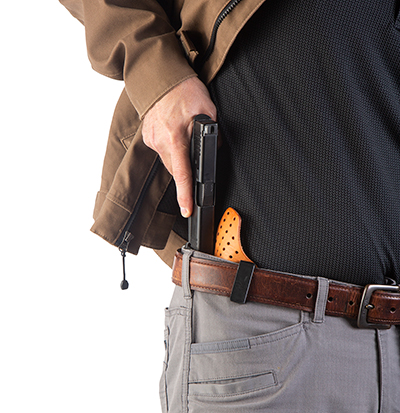
Deployment
If you are carrying a firearm for personal protection, it is considered your primary weapon system and as such must be made both secure and readily deployable. Most defensive shooters carry concealed and inside the waistband. Drawing from concealment adds complexity to the draw stroke. In comparison to an open-carry competitive shooter, those who carry concealed must initially defeat any cover garment(s) and then defeat any holster retention device(s), which are recommended for a defensive concealed-carry holster.
Retention can mean anything from cant (requiring you to draw the firearm along a specific angle), to a snap, to indents, tension screws, magnetics, a bail or hood, push-button (thumb or social finger) and the like. Certain law enforcement agencies or departments will require varying or multiple levels of retention.
Given these five most common demands placed on holster performance—materials, sizing, accessibility, carry and deployment—you’ll probably want to do some experimenting with different types, models and levels of retention until you find what works best for your operational and personal profile. Even so, it’ll take some trial and error.
In general, most manufacturers today must use quality materials to produce holsters for a variety of on-body carry positions, or they will be knocked out of the market. Hip holsters, paddle holsters, pocket holsters and even fanny pack holsters abound, and specific models are often created for specific handguns to include popular brand-name firearms.
Using these five common holster-performance-demand considerations can save you valuable time, cost and box space inside the inevitable unused-holster-storage box.












